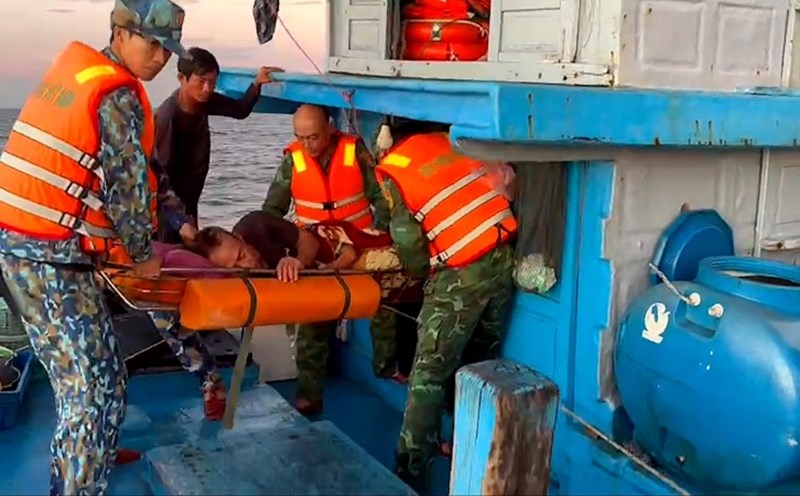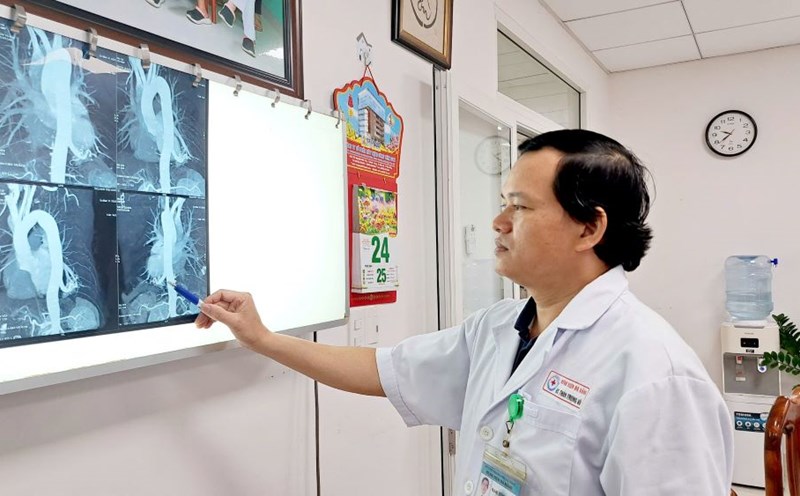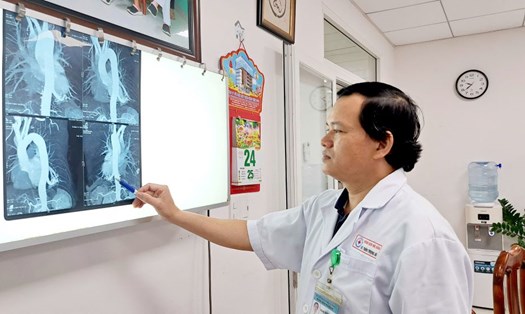The 34-year-old male patient, residing in Da Nang, discovered abnormalities through a chest X-ray during a periodic health check-up. The cat ngang photoshopped results showed a rear mediastinal tumor, location D1-D2, sand clock-shaped. The patient was indicated for chest endoscopic surgery to remove the tumor.
After 2 hours and 30 minutes, the surgery was completed and the tumor was completely removed. The patient recovered well, without complications, the ptosis condition improved and was discharged after 1 week of treatment. The pathology determined the tumor to be benign.
According to the surgeon, the tumor was located near many important structures such as the subcutaneous artery, subcutaneous vein, collective artery, X nerve, the cubica nerve, thoracic duct, cervical - thoracic interlace. Therefore, there is a high risk of complications: bleeding, hoarseness, Cerebrovascular fluid testing, chest damage, and worsening ptosis. However, the team successfully handled the situation, ensuring the patient's safety.
Experts say that the neuroblastoma is the most common type of neurotunus in the rear media, accounting for over 75% of the neurotunus at this location. The tumor often grows slowly, has few symptoms, and many cases are detected by chance. When the tumor is large, the patient may experience chest pain, shortness of breath, loss of hearing or Horner's syndrome. The sand urticollis tumor is rare and has complicated surgery because it involves both the living tube and the pleural cavity.












